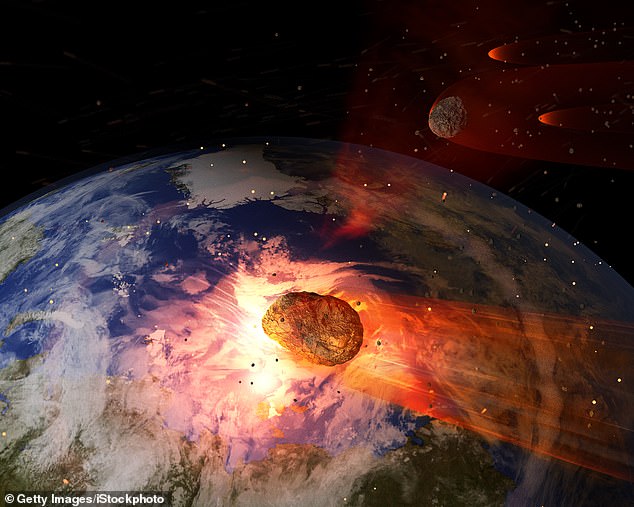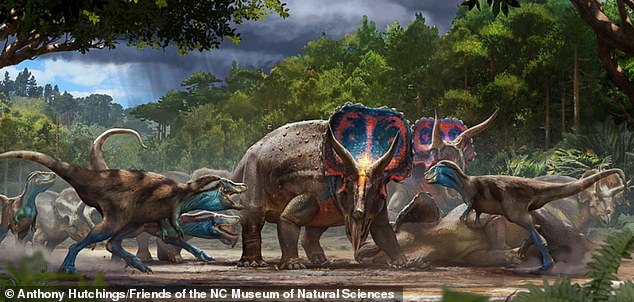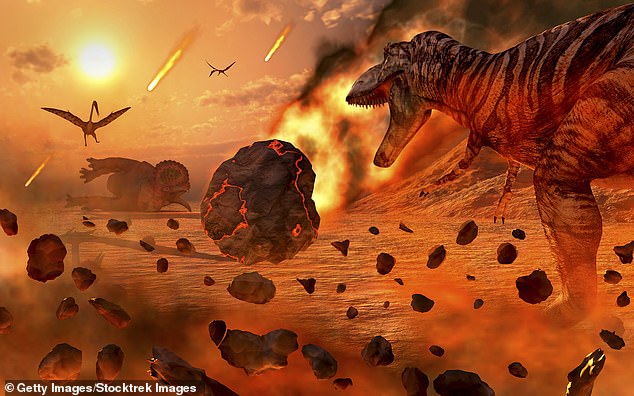Mass extinctions of animals that live on Earth occur in a cycle of 27 million years

A new study reveals that mass extinctions of animals that live on Earth, including amphibians, reptiles, mammals and birds, occur once every 27 million years.
US researchers conducted statistical analysis of the dates of 10 known mass extinction events that wiped out any tetrapods – animals with four limbs.
They discovered a basic “statistically significant” mass extinction frequency somewhere in the region of 27.5 million years.
These mass extinctions are consistent with large asteroid impacts and a destructive eruption of lava, known as a basalt flood eruption.
The researchers suggest that the Earth’s orbit in the Milky Way may be dictated by them, leading to showers of comets that have the potential to wipe out all life on our planet.
The last mass extinction reported by researchers occurred 7.25 million years ago, suggesting that we did not wait for another event about 20 million years ago.

About 66 million years ago, a giant asteroid hit what is now the Mexican Yucatan Peninsula, causing the sudden extinction of more than 75 percent of the plant and animal species on Earth.
“ It appears that the effects of the large body and the pulses of internal activity of the Earth that create volcanic activity in the basalt flood may proceed to the same beating of the drums of 27 million years as the extinctions, and may be driven by our orbit in the galaxy, ” the study author said. Professor Michael Rampino at New York University.
These new findings regarding a simultaneous sudden mass extinction on land and oceans, and a combined cycle spanning from 26 to 27 million years, lend credence to the notion of periodic global catastrophic events as catalysts for the extinctions.
In fact, three genocides of species on land and at sea are already known to have occurred at the same times as the three largest impacts during the last 250 million years, each of which is capable of causing a global catastrophe and resulting in mass extinctions.
Professor Rampino said the last vertebrate extinction event, albeit “relatively young”, was 7.25 million years ago, so the next event “could be about 20 million years in the future.”
250 million years ago, the Permian-Triassic extinction event, also known as the “Great Death”, wiped out 95 percent of marine species and 70 percent of land species at that time.
British researchers recently concluded that the Great Death was caused by a massive volcanic eruption in Siberia, which released massive amounts of carbon dioxide into the atmosphere.
When carbon dioxide dissolves in the oceans, it becomes very acidic and the level of oxygen in the water drops, which kills marine life.
Perhaps the most famous mass extinction occurred 66 million years ago, when 70% of all species became extinct on land and in the seas, including dinosaurs.

Pictured is an artist drawing to fight Tyrannosaurus Rex and the terrible Triceratops. The dinosaurs were wiped out due to the mass extinction around 66 million years ago
This event, now known as the K / T extinction event, was caused by the collision of a large asteroid or comet with Earth.
A scientist talked to him Smithsonian Magazine Debris from the asteroid said, “turned the air into an oven and caused wildfires around the world,” devastating the environment.
Paleontologists have already known mass extinctions of marine life, in which up to 90 percent of species have disappeared – not random events, but appear to come in a cycle of 26 million years.
Their attention turned to Earth, and New York University researchers examined the record of mass extinctions of fauna living on Earth.
They also conducted new statistical analyzes of wild species extinctions and showed that those events followed a similar cycle of about 27.5 million years, which indicates that they are in line with marine extinctions.

Periodic comet showers could occur in the solar system every 26 to 30 million years, resulting in cyclical effects and resulting in periodic mass extinctions.
The eras of craters resulting from colliding asteroids and comets with the Earth’s surface follow a cycle.
Astrophysicists assume that periodic comet showers occur in the solar system every 26 to 30 million years, resulting in cyclical effects and resulting in periodic mass extinctions.
The Sun and the planets rotate through the mid-plane of the Milky Way approximately every 30 million years.
“There are two potential effects,” Professor Rampino told MailOnline.
Natural matter and dark matter concentrated in the plane has the effect of gravity on the loose comets in the Oort Cloud that surround the solar system, causing comet showers and potential impacts on Earth.
Another effect is that some of the dark matter can be picked up by the Earth, where it becomes concentrated enough to annihilate itself, causing a heat pulse inside the Earth’s core, leading to volcanic activity.
Comet showers can have major impacts on Earth, creating conditions that wipe out and possibly kill wild and marine life, including darkness and hail, forest fires, acid rain and depletion of the ozone layer.
Meanwhile, volcanic eruptions will blanket vast areas with lava and create harsh conditions for life, including short periods of extreme cold, destruction of the ozone layer and increased exposure to radiation, as well as acid rain.
Researchers report that eight of ten Earth extinction events coincide with known marine extinction events.
All eight simultaneous mass deaths on land and in the oceans matched the times of basaltic volcanic eruptions.
Professor Rampino said: “It appears that the global mass extinctions were caused by the most catastrophic impacts and supervolcanoes, and may at times be operating collectively.”
In the long term, volcanic eruptions could lead to a deadly greenhouse temperature, more acids and less oxygen in the ocean, according to the authors who published their study in the journal. Historical biology.
Another expert has already warned that humanity today is a mass extinction event as early as 2100 due to global warming.
Professor Daniel Rothman of the Massachusetts Institute of Technology has devised a simple mathematical equation to predict when the next mass extinction will occur.
The formula found that by the end of the century the oceans will contain enough carbon to trigger a future genocide of species.
By 2100, about 310 gigatons of carbon will be added to the oceans – a potential “tipping point” for an environmental disaster, according to a 2017 study in Science advances.
Sir David Attenborough has already warned that people born today may see the end of the polar bear by 2030, another major pandemic in the 1980s and a “global human crisis” at the start of the twenty-second century.

Communicator. Reader. Hipster-friendly introvert. General zombie specialist. Tv trailblazer








